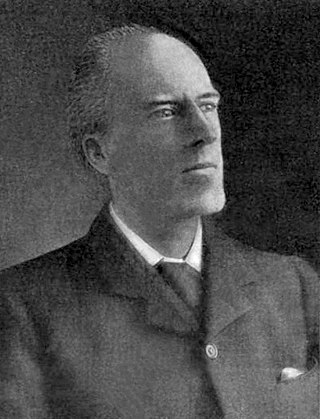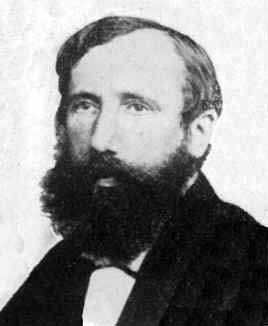Related Research Articles

Karl Pearson was an English eugenicist, mathematician, and biostatistician. He has been credited with establishing the discipline of mathematical statistics. He founded the world's first university statistics department at University College London in 1911, and contributed significantly to the field of biometrics and meteorology. Pearson was also a proponent of Social Darwinism and eugenics, and his thought is an example of what is today described as scientific racism. Pearson was a protégé and biographer of Sir Francis Galton. He edited and completed both William Kingdon Clifford's Common Sense of the Exact Sciences (1885) and Isaac Todhunter's History of the Theory of Elasticity, Vol. 1 (1886–1893) and Vol. 2 (1893), following their deaths.

Isaac Todhunter FRS, was an English mathematician who is best known today for the books he wrote on mathematics and its history.

Augustus Edward Hough Love FRS, often known as A. E. H. Love, was a mathematician famous for his work on the mathematical theory of elasticity. He also worked on wave propagation and his work on the structure of the Earth in Some Problems of Geodynamics won for him the Adams prize in 1911 when he developed a mathematical model of surface waves known as Love waves. Love also contributed to the theory of tidal locking and introduced the parameters known as Love numbers, used in problems related to Earth tides, the tidal deformation of the solid Earth due to the gravitational attraction of the Moon and Sun.

Sir Horace Lamb was a British applied mathematician and author of several influential texts on classical physics, among them Hydrodynamics (1895) and Dynamical Theory of Sound (1910). Both of these books remain in print. The word vorticity was invented by Lamb in 1916.

In materials science, photoelasticity describes changes in the optical properties of a material under mechanical deformation. It is a property of all dielectric media and is often used to experimentally determine the stress distribution in a material.
George Barker Jeffery FRS was a leading mathematical physicist in the early twentieth century. He is probably best known to the scientifically literate public as the translator of papers by Albert Einstein, Hendrik Lorentz, and other fathers of relativity theory.
A mechanician is an engineer or a scientist working in the field of mechanics, or in a related or sub-field: engineering or computational mechanics, applied mechanics, geomechanics, biomechanics, and mechanics of materials. Names other than mechanician have been used occasionally, such as mechaniker and mechanicist.
Raymond David Mindlin was an American mechanical engineer, Professor of Applied Science at Columbia University, and recipient of the 1946 Presidential Medal for Merit and many other awards and honours. He is known as mechanician, who made seminal contributions to many branches of applied mechanics, applied physics, and engineering sciences.

Jerrold Eldon Marsden was a Canadian mathematician. He was the Carl F. Braun Professor of Engineering and Control & Dynamical Systems at the California Institute of Technology. Marsden is listed as an ISI highly cited researcher.
Sir Owen Alfred Saunders, FREng, FRS was an English applied mathematician, engineering science academic, and university administrator.
A rigid line inclusion, also called stiffener, is a mathematical model used in solid mechanics to describe a narrow hard phase, dispersed within a matrix material. This inclusion is idealised as an infinitely rigid and thin reinforcement, so that it represents a sort of ‘inverse’ crack, from which the nomenclature ‘anticrack’ derives.
Herne House School was a minor private boarding school for boys based in Margate, Kent, England, founded at the end of the 19th century and which was only open for a very short period.
Albert Edward Green was a British applied mathematician and research scientist in theoretical and applied mechanics.
Prof Ernest George Coker FRS FRSE MIME MICE Wh.Ex. (1869–1946) was a British mathematician and engineer. He won the Howard N. Potts Medal for Physics in 1922, and the Rumford Medal for work on polarised light in 1936. He was an expert on stress analysis and Photoelasticity. He contributed to Encyclopædia Britannica and other works under the initials E.G.C.
Eli Sternberg was a researcher in solid mechanics and was considered to be the "nation's leading elastician" at the time of his death. He earned his doctorate in 1945 under Michael Sadowsky at the Illinois Institute of Technology with a dissertation entitled Non-Linear Theory of Elasticity and Applications. He made contributions widely in elasticity, especially in mathematical analysis, the theory of stress concentrations, thermo-elasticity, and visco-elasticity.

Sivaguru S. Sritharan is an American aerodynamicist and mathematician.
In numerical analysis, Filon quadrature or Filon's method is a technique for numerical integration of oscillatory integrals. It is named after English mathematician Louis Napoleon George Filon, who first described the method in 1934.
References
- ↑ Jeffery, G. B. (2004). "Filon, Louis Napoleon George (1875–1937) G. B. Jeffery" . In Yoshioka, Alan (ed.). Oxford Dictionary of National Biography (online ed.). OUP. doi:10.1093/ref:odnb/33128 . Retrieved 22 August 2012.(Subscription or UK public library membership required.)
- 1 2 Jeffery, G. B. (1939). "Louis Napoleon George Filon. 1875-1937". Obituary Notices of Fellows of the Royal Society. 2 (7): 501–509. doi:10.1098/rsbm.1939.0010. ISSN 1479-571X. JSTOR 769003.
- ↑ Meleshko, V. V.; Selvadurai, A. P. S. (2003). "Contributions to the theory of elasticity by Louis Napoleon George Filon as viewed in the light of subsequent developments in biharmonic problems in applied mechanics and engineering mathematics". Journal of Engineering Mathematics. 46 (3–4): 191–212. Bibcode:2003JEnMa..46..191M. doi:10.1023/A:1025045710387. S2CID 118341680.
- 1 2 Filon, L. N. G. (1928). "On a quadrature formula for trigonometric integrals". Proceedings of the Royal Society of Edinburgh. 49: 38–47. doi:10.1017/S0370164600026262.
- ↑ Stigler, S. M. (2008). "Karl Pearson's Theoretical Errors and the Advances They Inspired". Statistical Science. 23 (2): 261–271. arXiv: 0808.4032 . Bibcode:2008arXiv0808.4032S. doi:10.1214/08-sts256. S2CID 15343806.
- ↑ Pearson, K. & Filon, L. N. G. (1898). "Mathematical Contributions to the Theory of Evolution IV. On the Probable Errors of Frequency Constants and on the Influence of Random Selection on Variation and Correlation". Philosophical Transactions of the Royal Society A. 191: 229–311. Bibcode:1898RSPTA.191..229P. doi:10.1098/rsta.1898.0007.
- ↑ "University intelligence". The Times. No. 36829. London. 25 July 1902. p. 5.
- ↑ Notices: Fellows – Filon, Louis Napoleon George, Monthly Notices of the Royal Astronomical Society 98:247-9